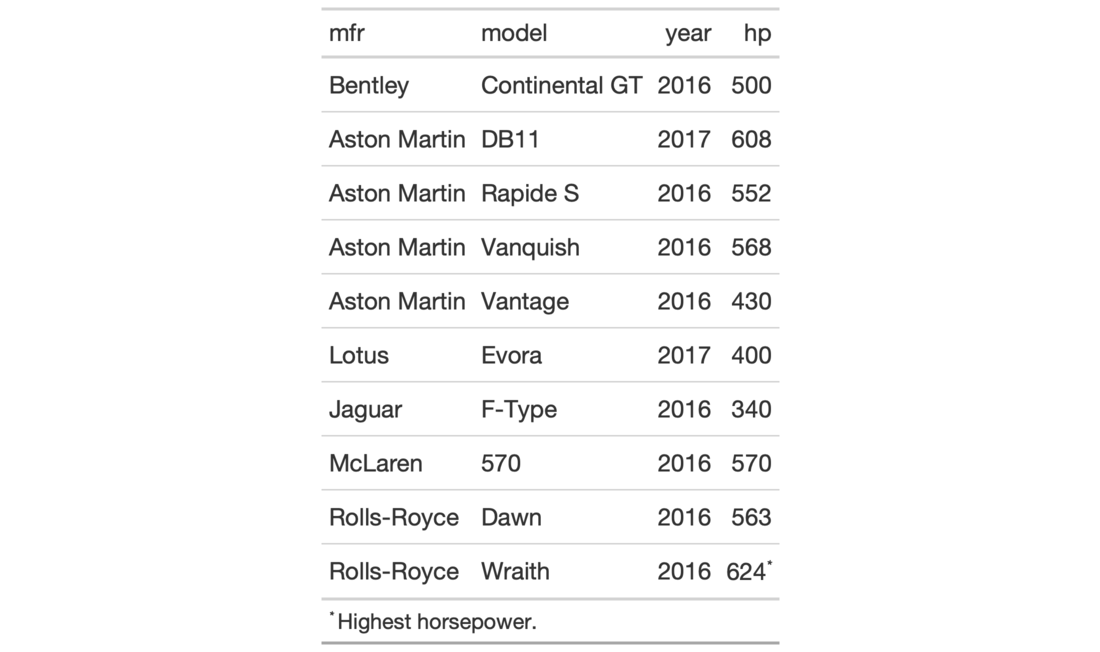The cells_body() function is used to target the data cells in the table
body. The function can be used to apply a footnote with tab_footnote(), to
add custom styling with tab_style(), or the transform the targeted cells
with text_transform(). The function is expressly used in each of those
functions' locations argument.
cells_body(columns = TRUE, rows = TRUE)
Arguments
| columns | The names of the columns that are to be targeted. |
|---|---|
| rows | The names of the rows that are to be targeted. |
Value
A list object with the classes cells_body and location_cells.
Details
When using any of the location helper functions with an appropriate function
that has a locations argument, multiple locations can be targeted by
enclosing several cells_*() helper functions in a list(). The following
helper functions can be used to target cells (roughly in order from the top
to the bottom of a table):
cells_title(): targets the table title or the table subtitle depending on the value given to thegroupsargument ("title"or"subtitle").cells_stubhead(): targets the stubhead location, a cell of which is only available when there is a stub; a label in that location can be created by using thetab_stubhead()function.cells_column_spanners(): targets the spanner column labels, which appear above the column labels.cells_column_labels(): targets the column labels.cells_row_groups(): targets the row group labels in any available row groups using thegroupsargument.cells_stub(): targets row labels in the table stub using therowsargument.cells_body(): targets data cells in the table body using intersections ofcolumnsandrows.cells_summary(): targets summary cells in the table body using thegroupsargument and intersections ofcolumnsandrows.cells_grand_summary(): targets cells of the table's grand summary using intersections ofcolumnsandrows
Figures

Function ID
7-11
See also
Other Helper Functions:
adjust_luminance(),
cell_borders(),
cell_fill(),
cell_text(),
cells_column_labels(),
cells_column_spanners(),
cells_grand_summary(),
cells_row_groups(),
cells_stubhead(),
cells_stub(),
cells_summary(),
cells_title(),
currency(),
default_fonts(),
escape_latex(),
google_font(),
gt_latex_dependencies(),
html(),
md(),
pct(),
px(),
random_id()
Examples
# Use `gtcars` to create a gt table; add # a footnote that targets a single data cell # with `tab_footnote()`, using `cells_body()` # in `locations` (`rows = hp == max(hp)` will # target a single row in the `hp` column) tab_1 <- gtcars %>% dplyr::filter(ctry_origin == "United Kingdom") %>% dplyr::select(mfr, model, year, hp) %>% gt() %>% tab_footnote( footnote = "Highest horsepower.", locations = cells_body( columns = vars(hp), rows = hp == max(hp)) ) %>% opt_footnote_marks(marks = c("*", "+"))